Cycling to the Baltic
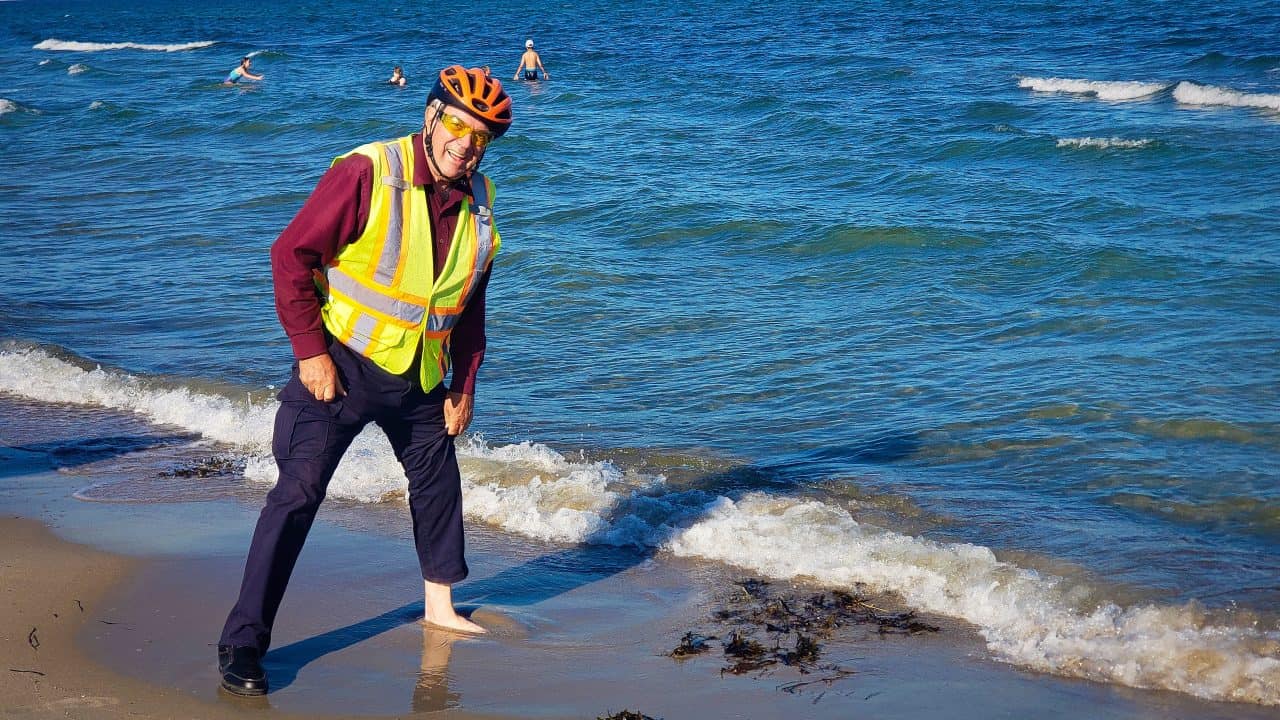
We did it! We just completed a cycle route from the Adriatic near Trieste in Italy all the way to the Baltic Sea. Enroute we cycled up through part of Slovenia, circled almost all of Austria, cut through Czech from South to North and finally rode through eastern Germany. The Adriatic to the Baltic, this was something we had wanted to complete this year and we did. Mike had to put his toe into the Baltic before I could say that we had actually arrived.
We were heading north in Germany to Rostock which is on the Baltic and is the largest town in the region. Somehow, instead of Rostock we ended up in Stralsund. I have no idea how this keeps happening to us but this time it worked out very well.
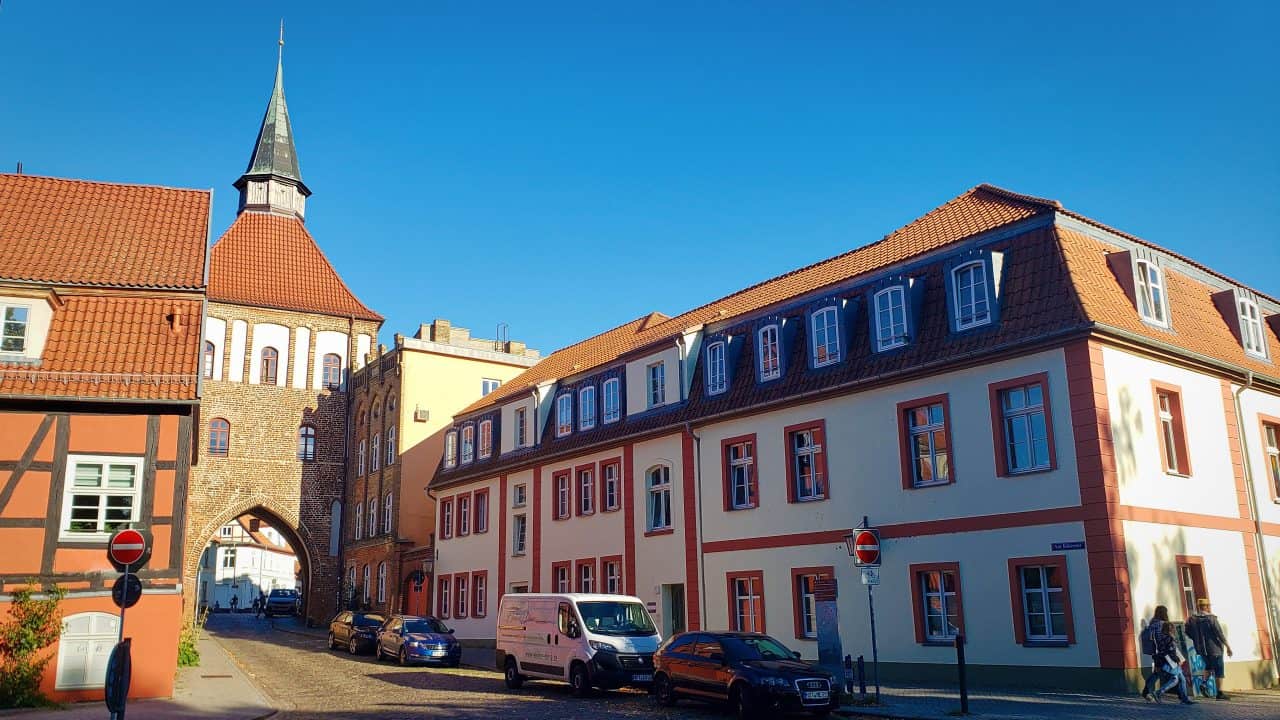
Stralsund was found by the Danes in the 13th century. The picture above was the entrance to our town. It was 4 km from our campground, and we biked there quite often. It had a spectacular skyline with three tall churches standing high above the horizon. The problem was that you could only get that picture from an illegal drone or from a very high bridge that went across to Rügen Island. There were no pedestrians or bikes allowed on this bridge and there was no place to stop a car to take a picture. So no skyline picture.
The St. Nicholai church in Stralsund was one of the few that Mike and I didn’t feel the same about. It was a very different church, Mike says weird. There were more old wooden carvings at the altar and elsewhere than I remember seeing in other churches. I liked it.
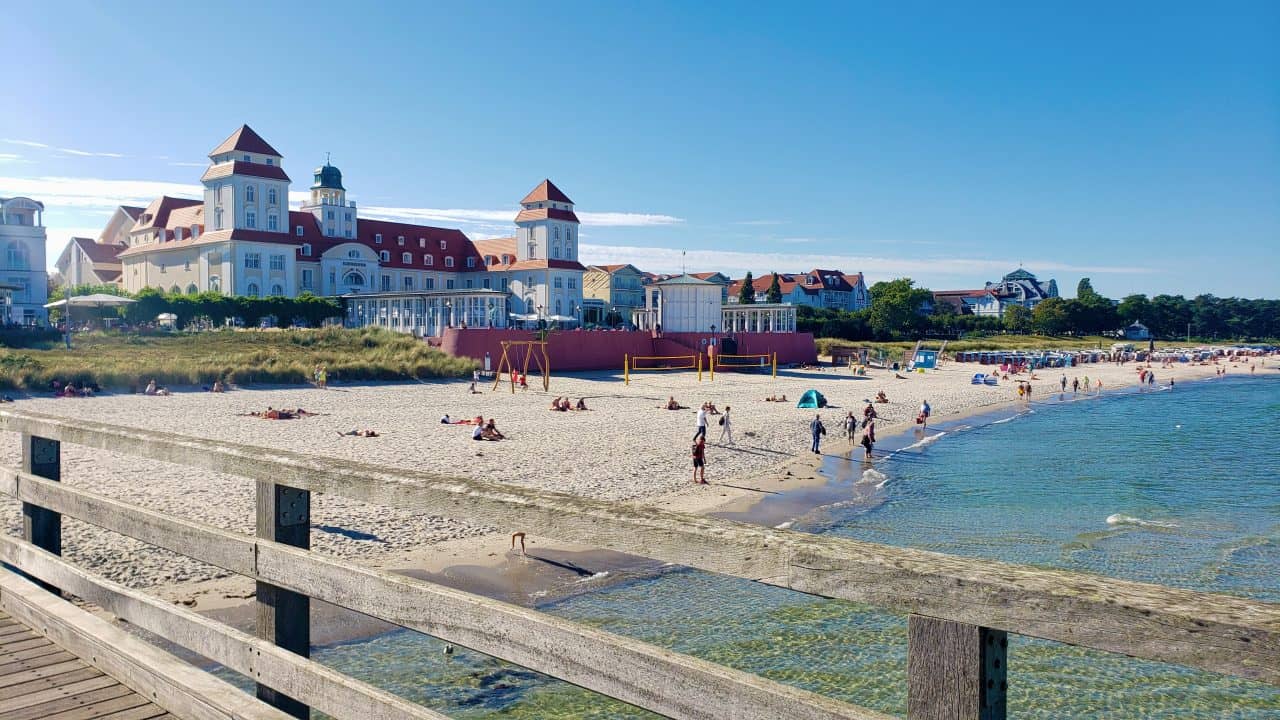
We spent a lot of time on Rügen Island. It is the largest island in Germany. We cycled more than 125 km on the island and didn’t come close to seeing most of it. The island is filled with beaches covered in an extremely fine, soft sand. This looks lovely on the beach but it isn’t so nice when it covers biking paths across the island. Soft sand is extremely difficult to ride in as your back wheel just keeps skidding out and there is a huge chance of falling. Once, after trying to get through a path in the woods, covered in this sand, Mike and I eventually turned around and walked our bikes out of the woods, back the way we had come.
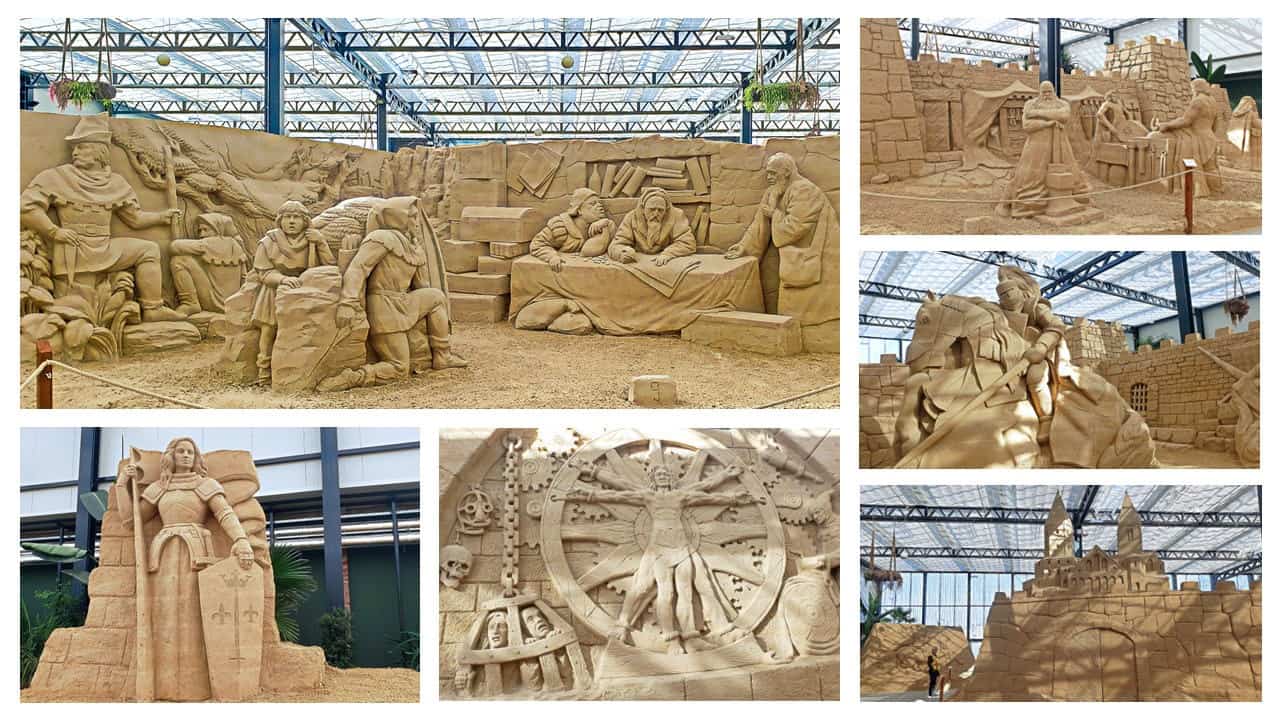
Riding around the island we visited the town of Binz. In addition to the very nice town centre and the seaside, Binz had two major tourist attractions in the area. The first one I took Mike to was indoor sand sculptures. They were absolutely phenomenal! Have a look at the collage above. The only picture that gives you an idea of the scale of these sculptures is the one with Mike in it in the bottom left. The sculptures are huge. Joan of Arc is on the bottom right and my guess is that the main one here is Robin Hood. Mike and I were just blown away by these sand sculptures. This gives a whole new meaning to building sand castles.
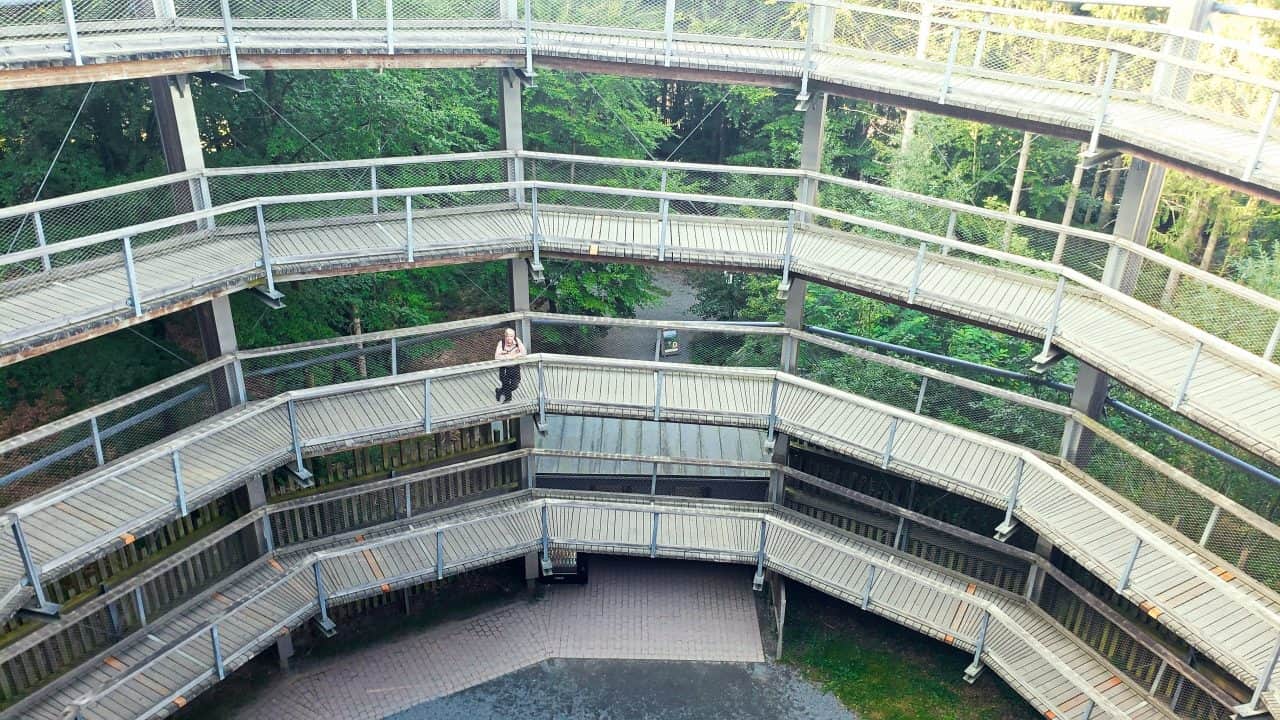
The second attraction was a tree top walk. This was advertised quite prominently. We last went on one of these walks in Hungary. Basically they are a wooden path built through the trees well above the ground. You walk up a circular ramp to get high enough, then continue on the path through the trees. Near the end there is an even taller circular ramp (almost 1 km to walk up it and another kilometre to come back down). This is to get you well above the tops of the trees so that you can see the views of the Baltic and the chalk cliffs that Rügen Island is famous for. We did this walk up and down and the ramp was gentle enough that my knees did fine. When we got to the top, it was a nice view, but everything was so far away that I can’t say that either Mike or I thought it was particularly great. The advertising for this attraction highlights going up the ramp and coming down on a slide. It turns out that you had to walk down the ramp and then walk along the path in the trees to get to the slide which I didn’t expect. Was I ever ticked when we got there. You could use the elevator for free. It cost us another $6 Cdn, on top of what we had already paid for the walk, just to come down the slide that was advertised as a major part of the attraction. I am the one in our family who likes ferris wheels, roller coasters, and that type of thing. On the slide you took literally a few seconds to descend. You descended faster than I ever remember going before and then you were out the bottom. Quite honestly, it was so fast and circular that it made your head spin, and it was over almost before it started. The sand sculptures were a way better attraction than this tree top walk.
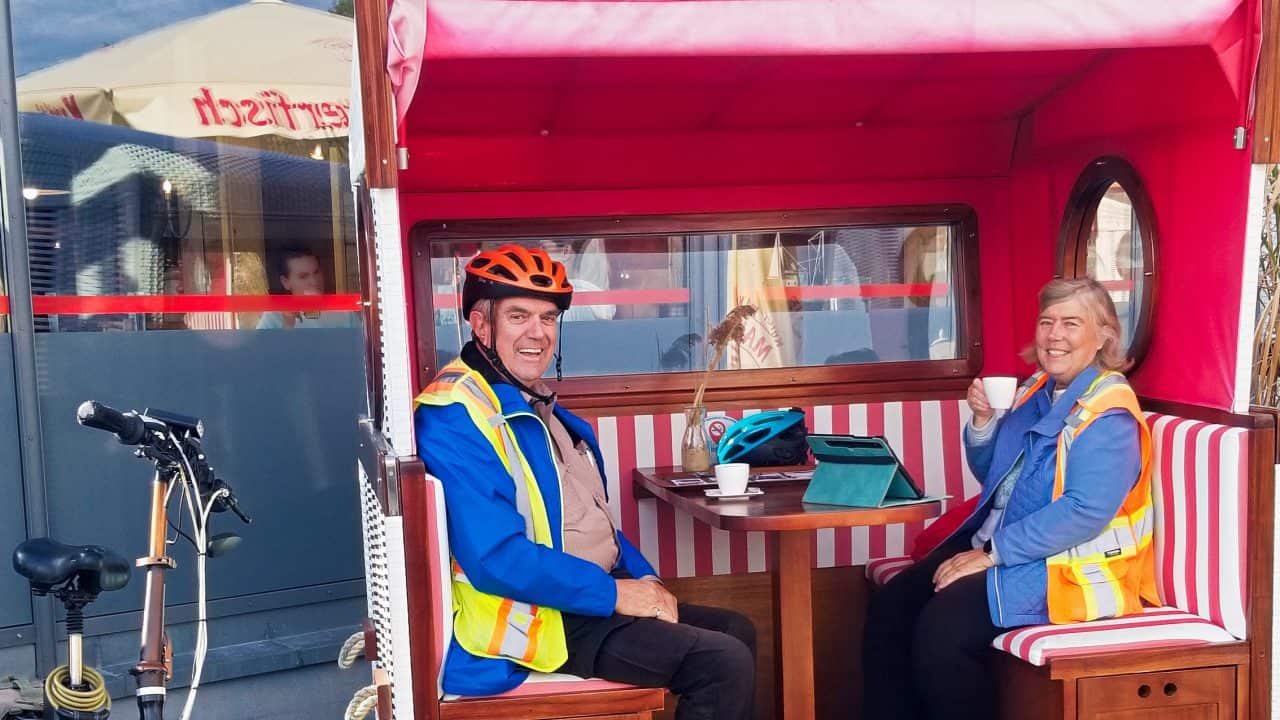
On another day we did a loop further north on Rügen Island. This time the main town we visited was Sassnitz. Sassnitz was developed as a seaside resort for summer vacations back in the 19th century. In the last 25 years the town has been extensively renovated to become a popular tourist destination. We visited Sassnitz two or three times. One day we enjoyed vegetable tapas for lunch. I have had tapas before but never a selection of only vegetarian ones. They was very nice. Sassnitz has a very long dock out into the water. I wanted to go to the end of it so Mike decided we should continue on our bikes and not using our feet. That was a good call. To the end and back of the dock was 3 km (almost 2 miles).
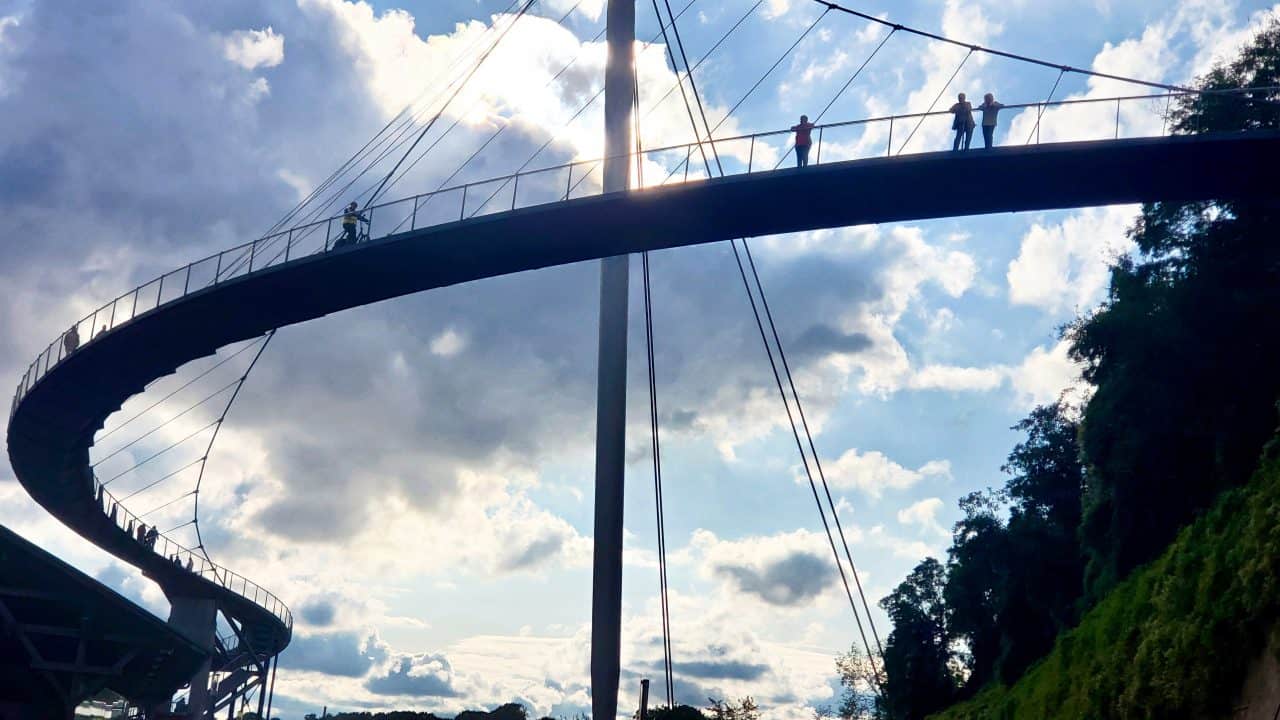
We saw two other things in Sassnitz that intrigued us. One was this covered life boat that looked like it was going to be jettisoned into the water. Mike thought that it was for testing. As I was writing this article, I looked at my picture a little closer and it says that the setup was used in a private school for ship safety. Mike saw the pedestrian “road” up in the sky and very much wanted to ride on it. We both rode up there but the small person you can see on the bicycle at the top is my husband.
Sassnitz is at the edge of the Jasmund National Park which is known for the stunning white chalk cliffs that abound in that area. One of the main tourist attractions is a newly built floating platform that supposedly gives you a great view of these spectacular white cliffs. Mike and I were not impressed. Again, the cliffs were too far away to see properly. They may have been a spectacular white colour close up but not so impressive from a distance. On the way to the floating platform, Mike and I accidentally got off the main biking path. Unknowingly we were on a rough hiking trail. It wasn’t the best.
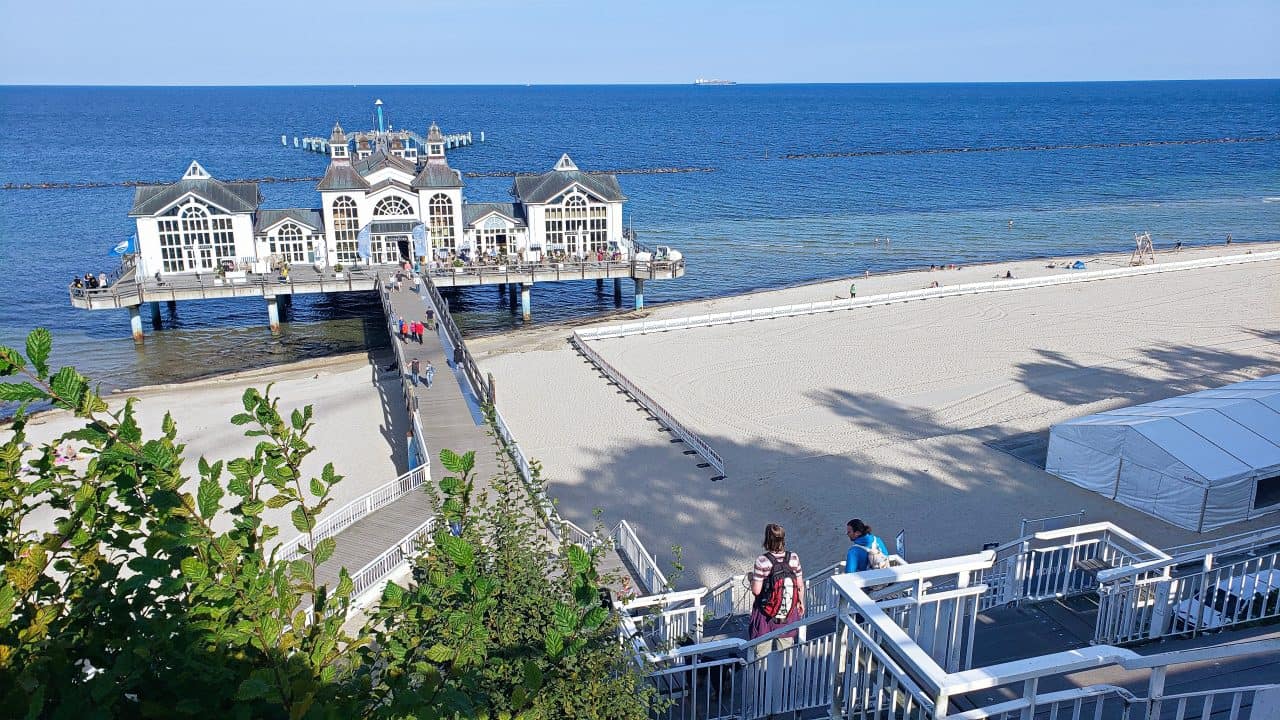
The last town we spent any time in on Rügen Island was Sellin. It is a lovely town. In the 18th century, Sellin began to develop as a seaside resort for the wealthy. The first hotel was built in 1794, and by the mid-19th century, Sellin had become a popular destination for summer vacations. Buildings are still being built today on the waterfront. In 1901, the Sellin Pier was built. This 394-meter-long pier is said to be one of the longest piers in Europe and is a popular tourist attraction. It is long but nowhere near as long as the dock on the northern part of the island. I wonder if working docks don’t count when talking about piers mainly for tourists?
Today Sellin is very touristy but also very nice. The main street wasn’t filled with cheap looking tourist outlets. The many restaurants and accommodations were all in lovely looking buildings.
Mike and I didn’t spend all our time on Rügen Island. We explored the Baltic both to the east and to the west, sometimes by car and often by bike. Germany is really well set up with their bike paths. I think I mentioned previously how great not only the German drivers, but the pedestrians are towards cyclists. As you explore the area you can’t help but notice the abundance of windmills and solar farms. The other thing that we couldn’t help but notice was the price of food in restaurants. Even though we spent a lot of our time in tourist areas, our meals were still lower priced here than we have seen elsewhere in Western Europe.
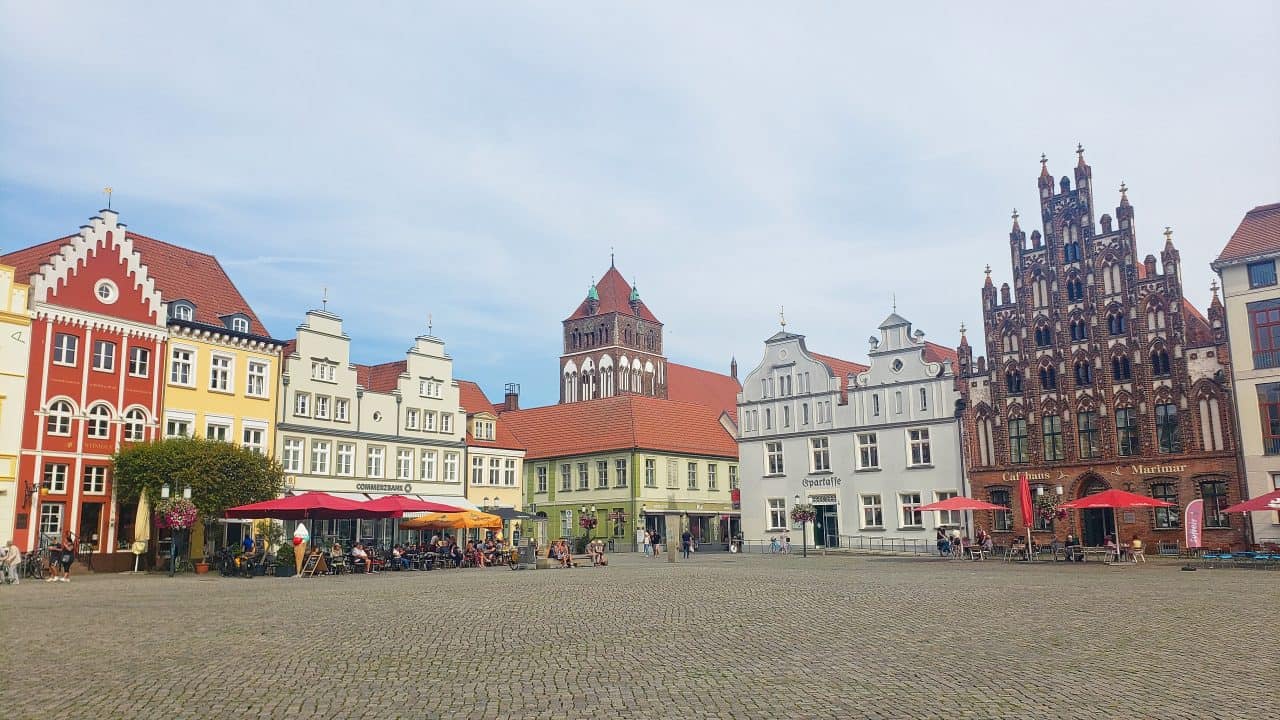
Greifswald was the first town we visited where I felt we could say that we had made it to the Baltic. We visited the town a few more times as it had a central train station with multiple train lines allowing us to begin or end our cycling paths here.
Our plan had been to cycle from Greifswald, along the Baltic into the corner of Poland. If you look at our cycling map you will see that we started to do this. On one of the rides along the sea, we cycled for over 40 km and came to a small outdoor café. I stayed there, had a glass of wine and read my book while looking at the water and the boats. Mike cycled the last 10 km to the car and came back and picked me up. We have been doing a lot more rides in the 45 – 50 km range than we used to. This time I thought a drink looked better than the last 10 km of a 55 km ride. Mike gets restless when we sit together and I order wine. A cappuccino I can drink quite quickly. One wine takes me a very long time to drink. Mike was happy to leave me to it. At this point we were within 40 km of Poland. Our next ride would have taken us on a new train line. We found out that the train for the last 40 km was going to cost us more than $150 Cdn. Being thrifty, we decided that it really wasn’t worth it and we could just bike west along the Baltic back to our camper in Stralsund instead of east.
On that last ride connecting us up to Stralsund we saw a Linden tree (north American version of the tree is called a basswood) that is said to be over 1,000 years old. The church beside the tree was 800 years old and documentation has the tree much older than the church. We were quite happy to stop and view the church and the tree as it gave our vibrating eyes and bottoms a rest. We were on a 45km bike ride. For about 20 km in the middle of the ride the street and the bike path were paved with cobblestones. If any of you have ever ridden on cobblestones, it is pretty awful. Previously we would see cobblestone roads mainly in the historic centre of a town. In eastern Germany they seem to use cobblestones a lot more. They cover many more roads, paths, anything they can think of with this surface. The rattling is so bad that you wonder if your your bicycle (or your eyeballs) will stay in one piece.
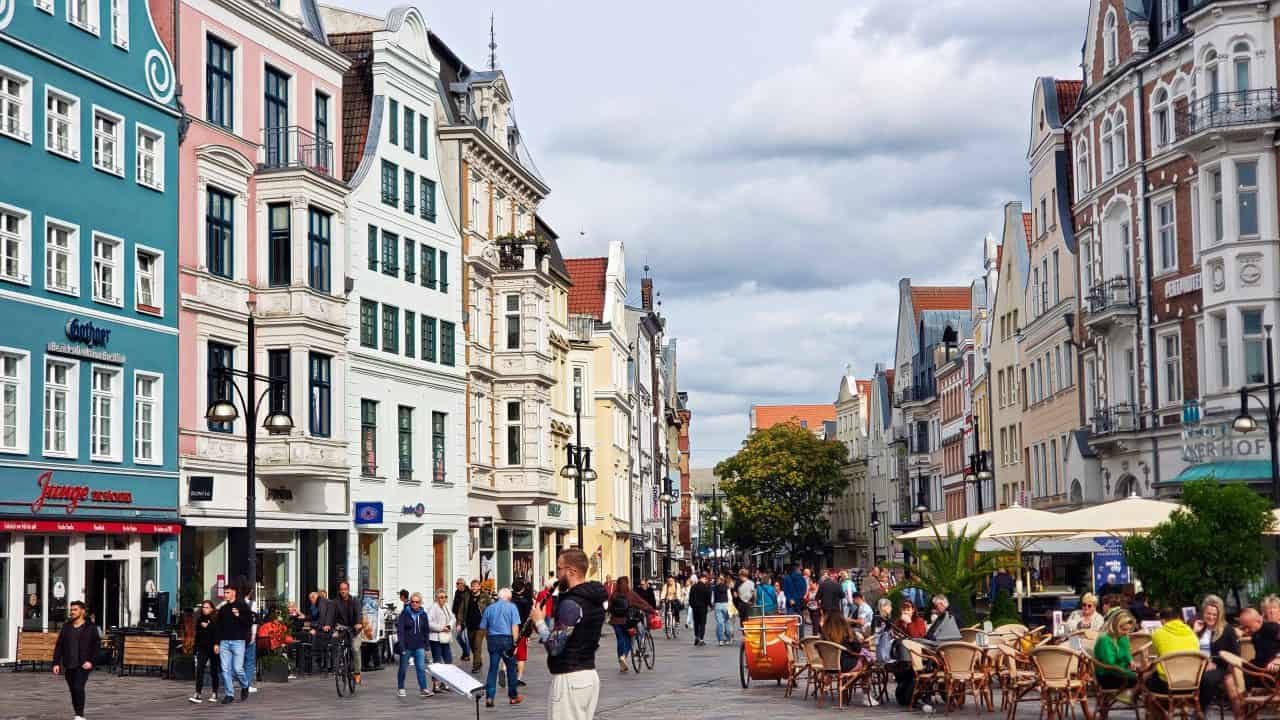
I mentioned earlier that we had originally been planning on camping near Rostock. Since that didn’t happen, we decided to at least drive there. Rostock was damaged more than many of the other towns in the area during the Allied bombings in WW II. As you can see, the reconstruction has been done very well. At the bottom of this post is a picture of a church in Rostock with a fountain in front of it. The fountain, which was very nice to look at, is called the Neptune Fountain except that Neptune isn’t in it at all! They have so much more fun with statues and fountains in Europe than we do in Canada.
Mike and I are leaving Germany now. We hope to return in 2024. Next stop – western Poland.
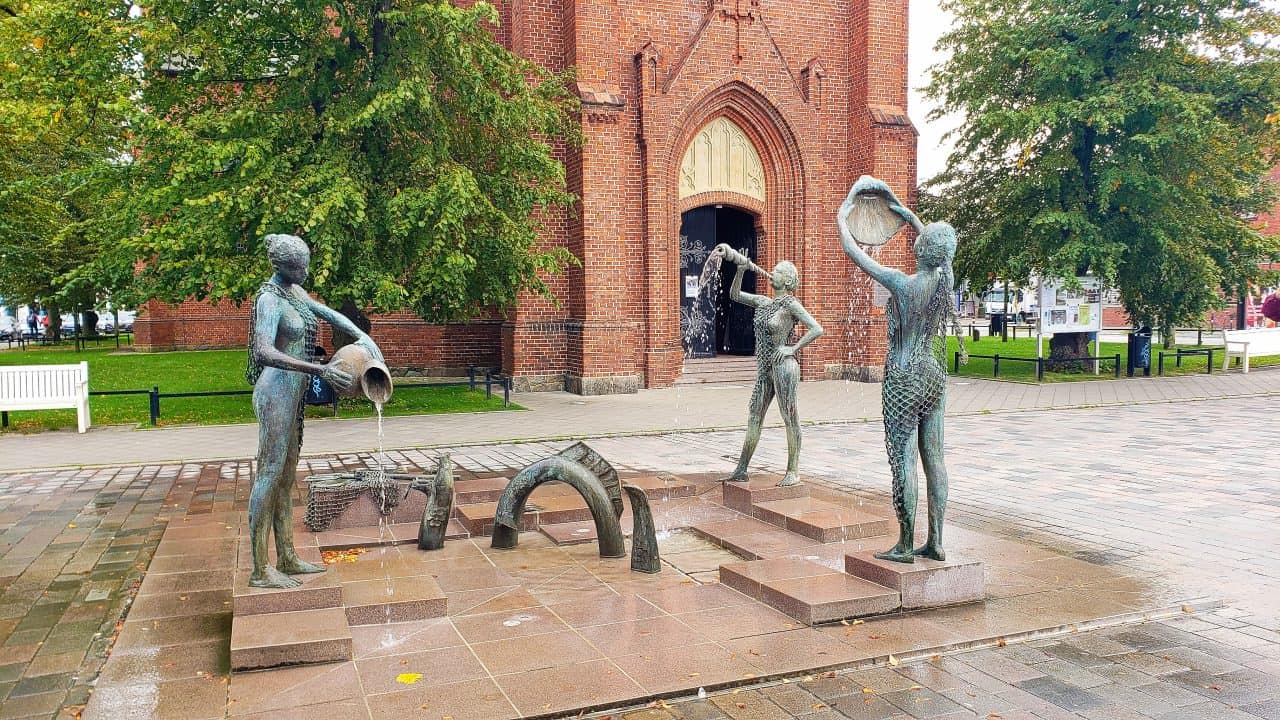

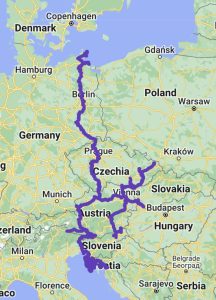
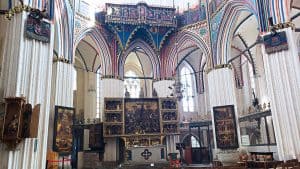
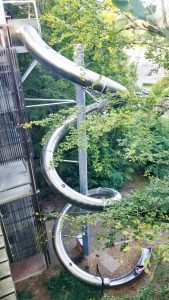
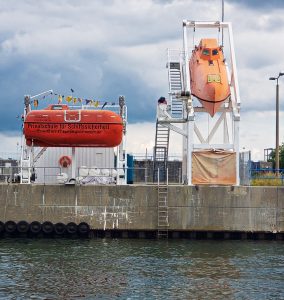
Leave a Reply